My favorite cameras for usability, ability and versatility mid 2014
By Steve Huff
Wow. It is already mid 2014. Half of this year has whizzed by faster than ever and as always we have a ton of cameras that we can choose from when it comes to photography. If we want something small that packs a punch, we have that. If we want something for low light, we have that as well. If we want something that is a joy to shoot, hold and use, well, we also have that. Do we have it all in one single camera yet? Well, not really.
There are always new camera seeing released though maybe not as many as the years past. DSLR production, as in new models, has seemed to slow down some from the constant barrage of new models that we used to see. Well, at least it seems like it. Even mirrorless offerings seem to be lasting a little longer between releases these days, and this is GOOD as we are at the point now where almost any camera will give us better results than most of us even need.
So far in 2014 we have had some cool releases and there are still fantastic cameras that were released in the past that are still perfectly usable. The question you need to ask yourself when deciding on a new camera is “What will I be shooting with it”, also “Do I value usability more than overall versatility”? “Will I be shooting mostly low light or in good light”? “Does it need to fit in my pocket”?
Once you decide what it is you want to use the camera for, be it portraits, your kids, vacations, or just an everyday shooter then you need to decide if you want simplicity in a fixed lens model or something that will allow you to choose and change lenses. The choice is yours as there is something out there to fit your needs, and I am going to talk about the cameras I like as of July 2014 with the reasons WHY I really like, if not love them.
My fave cameras made for Versatility
Micro 4/3, Olympus E-M and E-P series
My favorite camera for ALL OUT versatility as of today is still the Olympus E-M1 or even E-P5. These cameras are beautifully made with a solid feel and gorgeous looks (in the case of the E-P5). They have some of the best lenses made for any system next to Leica from fisheye to telephoto and everything in between including some super fast primes like the Nocticron f/1.2 that is one of the best lenses I have ever used. With Micro 4/3 you have speed, you have the lenses, you have the build, you have the amazing 5-AXIS Image Stabilization and you have a smaller size. The lenses are so good, and not so astronomically priced. The color reproduction is beautiful and the B&W is not too shabby either. A camera like the E-M1 has it all and the only real weakness of this camera is that the sensor is smaller than full frame and smaller than APS-C. For this reason you lose out on some shallow depth of field and the images will be a bit more noisy at high ISO than full frame cameras.
Even so, if you shoot mostly in good light and want one hell of a system with unlimited lens choice and an all around great experience with pro image quality results, the E-M1 is still a gorgeous camera. The E-M10 and E-M5 are as well. I reviewed them all and you can read my reviews of these models HERE, HERE and HERE. Yes, you can indeed get DSLR quality and beyond with these models.
You can buy the E-M1 at Amazon or B&H Photo.
Three from Micro 4/3 – Super versatile cameras that do it all.
My fave camera for Point & Shoot, Vacation and SMALL SIZE!
Sony takes it here for me with the new advanced pocket rocket, the RX100 III.
The new Sony RX100 III is a hell of a camera in almost every way. It is small, made very well, has a pop up EVF, tilt LCD and stellar IQ for a small pocket camera. It’s a handsome camera as well and gives us an f/1.8 to f/2.8 lens from 24-70 (ff equiv). What is not to like? The color is great. the files are nice and I have seen some do amazing work with the RX100 version 1 and now Version III improves on that model in every way. This is, hands down, the best pocket camera I have ever seen or used, ever. Video is good as well. It does it all but will not give you the all out versatility or IQ of something like a Micro 4/3 or full frame model. For what it is though, it is the perfect camera for every day shooting, vacation, kids, family, events, etc. Whoever buys an RX100 III will not be disappointed. It is the real deal. I have been able to use one for a but thanks to B&H Photo but have not had serious time yet with it. Will be doing that this week. You can buy the RX100 III at B&H Photo or Amazon.
My Fave camera for Usability
Without Question, the Leica M reigns supreme here
The Leica M, any of them from film to the M 240 or Monochrom take this one for me in a huge way. These cameras are ones that you cherish and create an emotional bond with. For those who think that is nonsense, then you have never had that bond with a camera, and yes, it is real. The Leica M is a masterpiece of design, build, and usability. All manual focus using a rangefinder it is a very precision tool that actually can teach you a think or two about photography, framing and exposure. It is a tool one can use for a lifetime if you choose a film model, as they last forever. While the price is off-putting to many, think about it in a new way. This is a camera that will give you the most enjoyment from any camera ever..well, it has for me and not everyone is the same. From the moment you take it from its box all of your regrets of the money spent fade away.
The Leica M6, M7, MP, M8, M9, M240 and Mono will give you that Leica experience that no other camera will give you. As for IQ, others can meet or exceed the Leica in that area but nothing can beat it for usability or for creating that emotional connection. You can buy a Leica from many places these days but my faves have always been Ken Hansen, PopFlash.com, The Pro Shop and Leica Store Miami. These guys will treat you right.
Three from the Leica M 240
My favorite camera for general every day and low light use
The Sony A7s wins this one easily.
You guys know how much I adore the Sony A7s and while it is not the most versatile (only due to lack of native lenses when compared to others such as Micro 4/3) camera it is indeed quite powerful. There is no low light situation that this camera can not tackle, period. When used with the 50 0.95 Mitakon I can see in the dark and when used with the native Sony lenses such as the 35 2.8 or 55 1.8 the camera will even AF in the dark. Amazing. The A7 also has better color performance than the A7 and A7r , better AWB, faster AF and better M mount lens compatibility. You can read my review here to see what it is all about but I now have one of these bad boys with a few lenses and love it to pieces. As I said in the review, the A7s is probably puns for pound, dollar for dollar my favorite camera that I have ever reviewed.
Low light shooters, this is a must try or own. The camera also is excellent in daytime shots and video. If more native lenses were around it would be unbeatable for me as of July 2014.
You can buy the A7s at Amazon or B&H Photo.
Three from the A7s, 1st one using the Voigtlander 35 1.2 wide open and a 100% OOC JPEG. 2nd one is from the Mitakon 50 0.95 and third and fourth is from the Zeiss 50 Sonnar 1.5.
Runner Ups
The Fuji X-T1 and Leica T are also very cool and very capable cameras. The Leica is different than other cameras in its interface and joy of use. It is a Leica and gives you the Leica style of IQ and pride of ownership. The Fuji is still a lightweight in the build but for Fuji fans, this is the best of the lot when it comes to Fuji interchangeable lens bodies.
Of course these are not the only cameras I like, but they are my faves as of July 2014. The Sony, the Leica, the Olympus..all superb in so many ways and unlikely to leave anyone disappointed as long as you use them with good glass. The key is to get out and use them (for me it has been tough since it has been 110-112 every day and me and extreme oven like heat do not jive well for more than 5-10 minutes) and have fun using what you do own. The key is you more than anything, not the gear..though I admit..it is very fun to test and try new cameras!

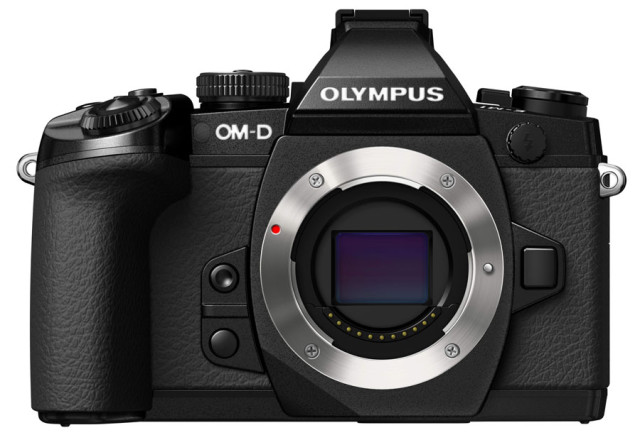
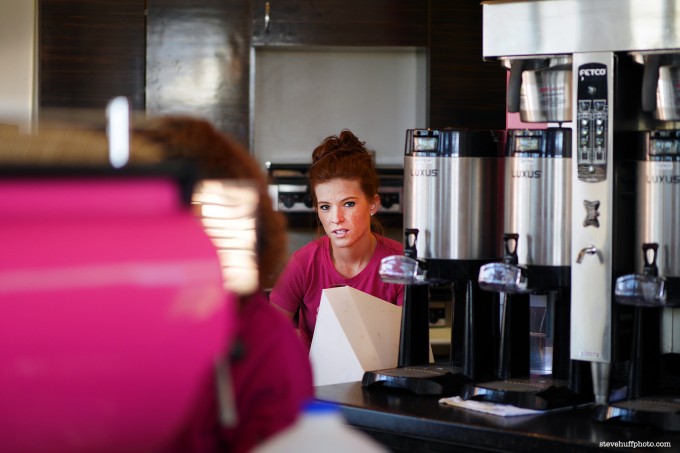
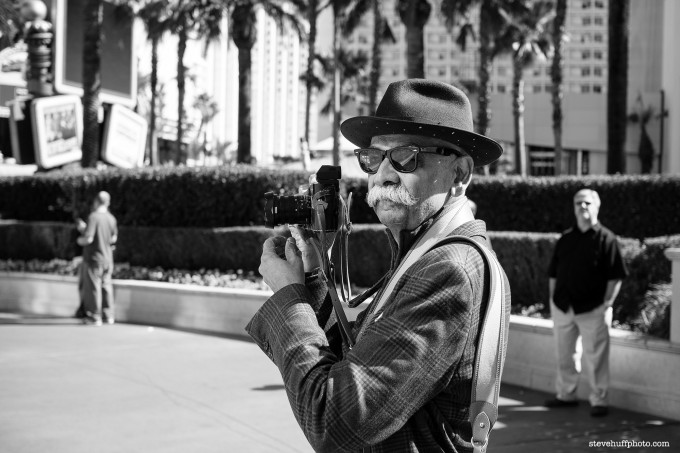

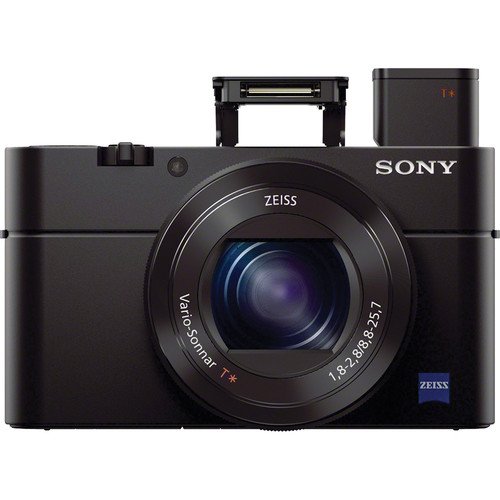
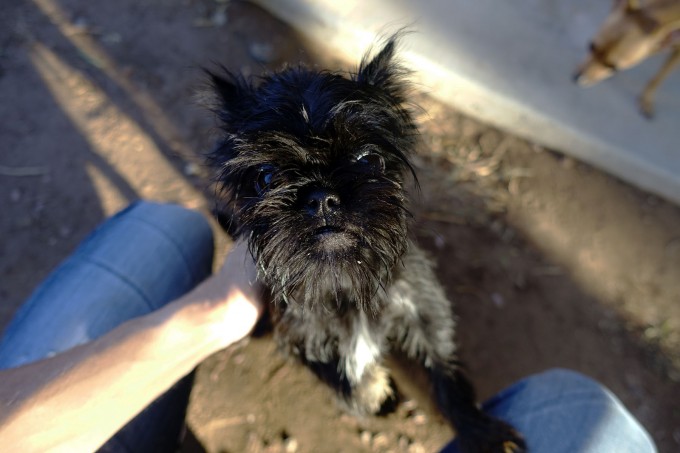
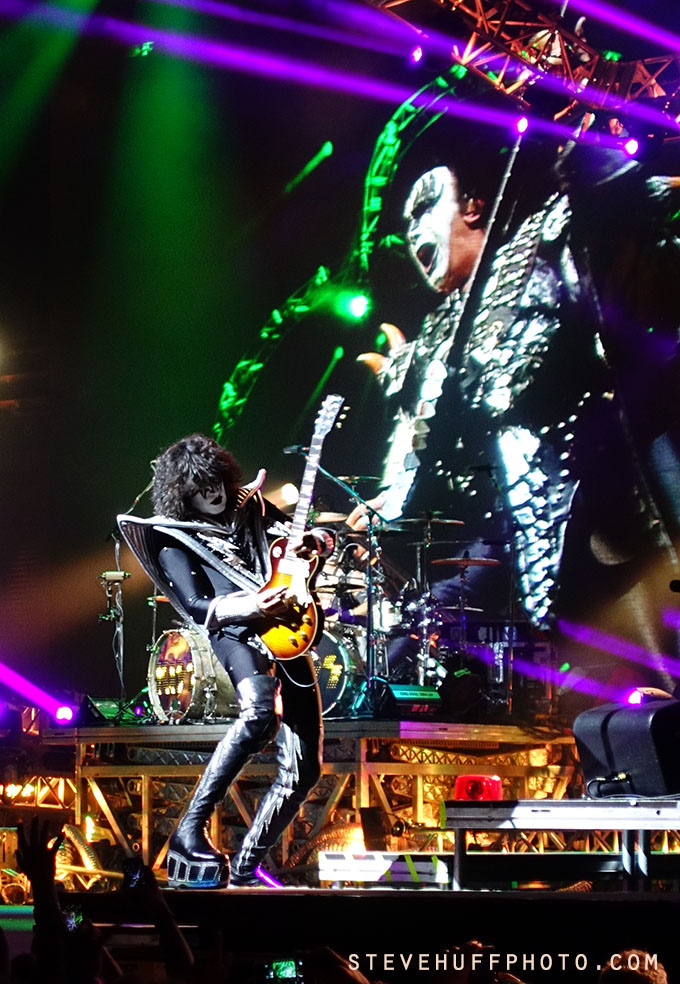
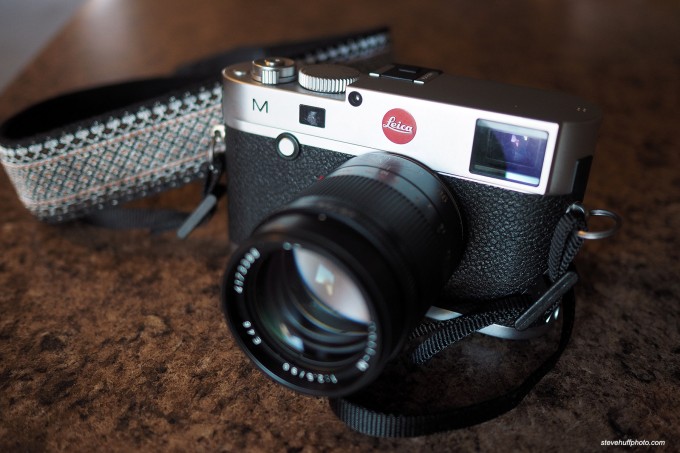
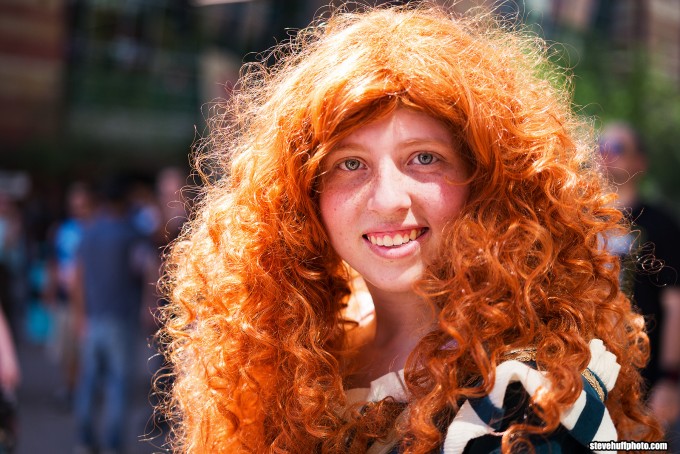

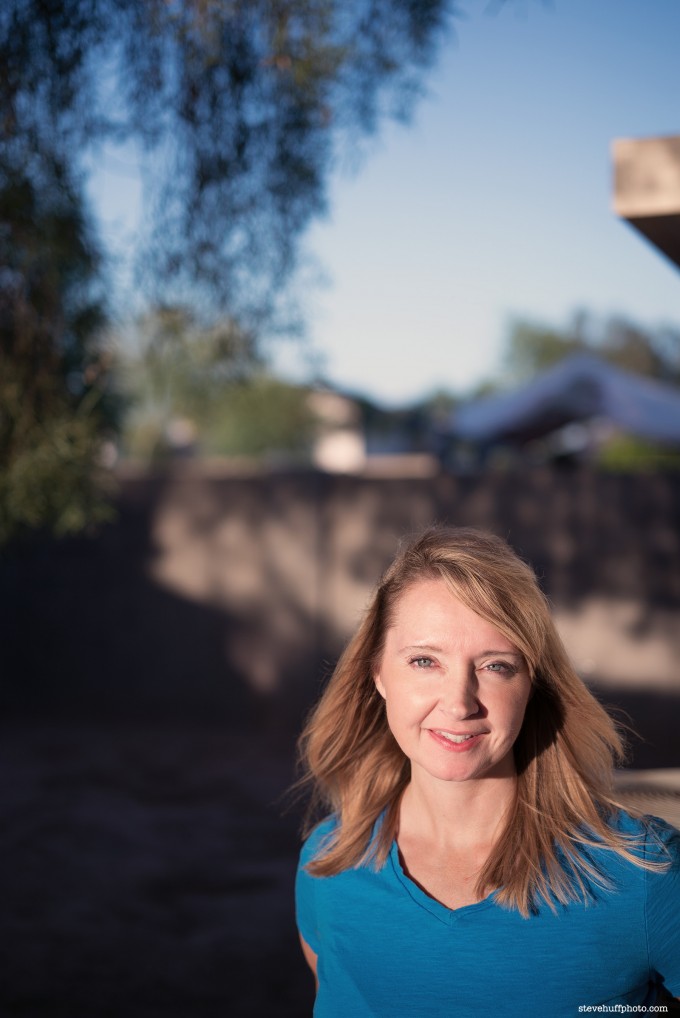
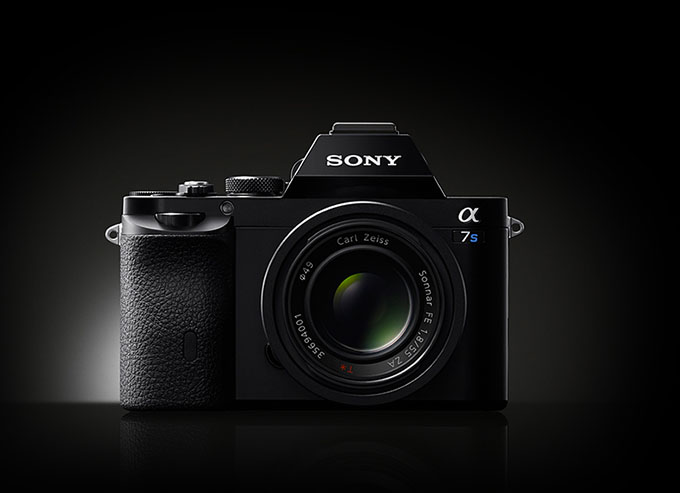

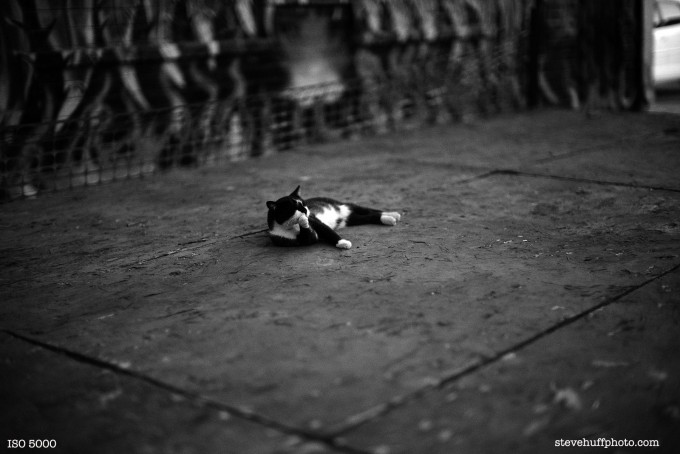
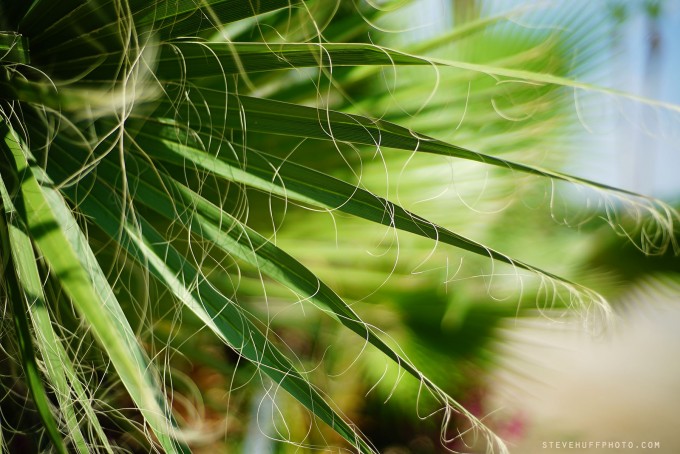
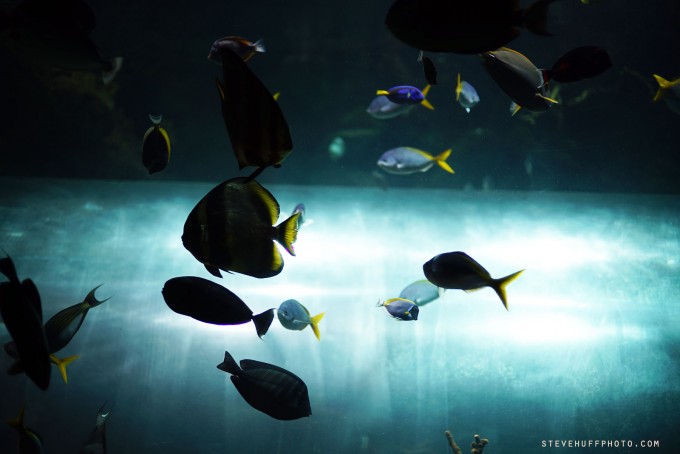


Great choice of cameras up top. I have:
OMD EM5 mk1. Fast, versatile, and the m43 lenses are good. Love the 9-18 zoom. Bit fiddly sometimes but sharp images up to 6400.
RX100 M3. A joy to use. Love the evf and the aperture ring. Needs an add on grip – or it gets slippery but otherwise WOW! Sharp images and perfectly usable to 3200.
And I am about to buy…
A7s. At last, a camera body for my collection of voigtlander and other ltm lenses. Most compatible camera out there for these beautiful old lenses, especially the ultra-wides. I am looking forward to using it in manual mode, with a high shutter speed to avoid shake. If the reports are correct, I will then enjoy using manual aperture and focus (simple hyperfocus on the cv 12 or 15) with the iso set to auto – with no worries – in any light ! Real game changer. Can’t wait to get started !
I would concur with Steve that viewfinders are a necessity and that DSLRs are just too bulky.
I am not liking the X100T very much at all so far. IN fact, having a hard time reviewing it. I disagree with every item on your list, and I have used EVERYTHING in 2014. 🙂
My view of best Cameras of 2014
Best point and shoot: Canon G7X
Best Mirrorless: Fuji X100T
Best APSC DSLR: Canon 7D Mark 2
Best Full Frame DSLR: Nikon D750
Totally agree except for the Leica. I’ve never had my dream camera so I can’t speak to it but I have the others and you are spot on!
You may have just sold me on the A7S! I have the A7R and find it struggles in low light with AF but the pictures are full of detail! I love my Fuji XE2 bodies and also loved my X100. There is something about the “Fuji colors” and jpegs that Sony cannot match. If the A7S finally matches this?! I’m sold.
I feel the same way! I have the A7R and two Fuji XE2 bodies and lenses. I REALLY REALLY want the A7S, but sell the Fuji’s for it? I just cant…
Or can I? haha damn Sony!
Easy: For versatility Olympus, for image quality Sony. I wish, the two companies would merge. Take the E-M1, change the mount to E-mount, insert Sony’s full frame sensor. Deed done!
Now THAT would be my dream camera!!!
Eek! That’s tough. SO many good ones out there. One camera I forgot about in my list is the RX1! Amazing camera even today. But one camera for 30 years? I do not think a digital would last that long, but if it did..and I was not a blog owner or reviewer..it would a tough choice.
It’s horrible due to aliasing and moire patterns which the camera does not have in still photography mode.
If I do not have any M lens, is E-M1 with M4/3 lens or Sony A7s with E-Mount/A-Mount lens a better choice, in terms of quality and versatility?
Thanks a lot everyone!!
Steve, 1 lens, one camera, for the next 30 years. What would it be? For You?
I have the RX100M3 and the GM1 with kit zoom, 15mm “Leica” and 45mm Oly. The sweet spot for the GM1 is in usage with the two primes, but it`s jacket pocketable at best with either of these two excellent lenses. With the kit zoom, IQ between the two cams is a draw as the Sony easily compensates for its smaller sensor with a faster lens. Ergonomics and versatility, especially now with the EVF, clearly go to the Sony. Turning on or off the GM1 with kit lens is a two hands, three steps process, awkward and not point and shoot alike. The forte of the GM1 is as back up body for mft shooters or with a fast prime for candids at social events. As an “all on board” versatile pocket camera, the Sony RX100 has no competition.
Okay, I’ll bite. I don’t think it is Steve who has lost his marbles…
Size / Ergonomics
The Panasonic GM1 is only smaller than the Sony RX100m3 when there is no lens attached… great, that’s very useful – thanks for pointing that out. Where exactly is the EVF on the GM1? I’ve looked and just simply cannot find them. Oh well, I guess in daylight you can just tilt LCD screen… well, you could if Panasonic and not made it fixed – unlike the Sony.
Image Quality
So I hear the m43 sensor in the GM1 is very good, I guess it’s a stop better than the Sony… it’s just such a shame the 12-32 kit lens is two stops slower than the built in one on the Sony, and also a such a shame it stops at 64mm (equiv). Add a faster/longer lens? Suddenly we’re not in the same price, size or weight bucket anymore. And if you did want to shoot in broad daylight with the fast aperture (for shallow DoF for example)… where’s does Panasonic keep the ND filter? Is it built in like on the Sony?
Video
How’s the full sensor readout on the GM1? Oh it doesn’t? Shame.
The GM1 is a wonder in terms of m43 miniaturization, but better at being a compact than the Sony it certainly isn’t. Perhaps for your next comment you can explain why it’s better at being an m43 camera than the Olympus E-M1. You may find the GM1 is just a jack of all trades… and the master of none.
> by far the most fun
That’s it for me too. Out of the box, it was a blast. Light, fast, responsive, accurate, adept, with delicious images. Then came the times I was thinking, “well, it would be a better camera if I could just..” and then after looking it up online or in the manual, realized, “.. oh yeah.. It does!” It’s both lock-step with me as a shooter and a half-step ahead of me as an experimenter. What an awesome tool.
I agree with Robert Falconer. It’s really hard to find flaws when shooting an EM-1. As an active carry camera, it may be peerless.
I stand corrected on the EVF – I was mistakenly thinking of the RX 100 ii – I apologize for this mistake. However as good as the sensor is on the RX 100 iii it just isn’t as good as the MFT sensor on the GM1. And by old tech I was referring to fixed lens P&S cameras which are clearly dying out. So I stand by my statement that the GM1 interchangeable lenses and superior image quality trumps everything else.
Very silly… And you clearly have no knowledge of the rx 100 m3… It comes with a pop up evf and the sensor is not old tech…
Thanks for the response Steve – let me say I really enjoy reading your website – I think it’s terrific. The GM1 is a system camera which is ALSO a P&S camera which is what makes it clearly superior to the Sony Rx 100 iii. You may hate the Nocticron or other larger lenses on the GM1 – but there is an array of MFT pancake lenses that all work well with the GM1 and all are perfectly pocketable – including the new Leica/Lumix 15mm f1.7 lens which is being made expressly for the GM1. I know how much you love Leica glass – why do you resist a pocketable MFT camera with Leica glass? The kit zoom for the GM1 is way above average. Micro 4/3s Photography said “small and brilliant,” Image Resource said “small on size – big on quality,” PC Magazine said “impressively sharp throughout the zoom range.” The EVF for the Sony is an expensive, separate attachment that is huge and makes the Sony no longer pocketable. It’s true the Sony has some nice features that the GM1 doesn’t – but it’s also true the GM1 has some nice features the Sony Rx 100 iii doesn’t – like 24p video – touch screen – much faster auto focus. Ultimately the fact that the GM1 has interchangeable lenses and superior, professional level image quality trumps everything else. The Sony RX 100 iii is an old technology – fixed lens P&S cameras – whose time has passed – whereas the GM1 opens up a whole new world for the compact camera. It is a camera the point and shoot photographer can happily use – but the professional can also use and not sacrifice image quality for portability. I agree with you on most things – but I think the GM1 is a brilliant camera. Thanks Steve.
I agree on the EM-1. I’ve been shooting almost 50 years (first real camera a Minolta SRT 101) and collecting cameras for 30 years. This is by far the most fun, functional and all around excellent photographic tool I have ever used. The more I use it, the better it seems to get.
What it means is that today’s µ43 sensors do a more impressive job, relative to their size limitation, than many APS-C or full-frame cameras.
I haven’t rated anything over anything yet – but the GM1 is a system camera, not a pocket P&S. It takes lenses, and when lenses are attached it is in no way pocketable like the RX100 III. It also is missing a EVF. The WHOLE POINT of the RX100 is to have a camera in your pocket that is high quality and loaded with everything you need. EVF, check. Tilt LCD? Check! Awesome Video? CHECK! Pocket Size? CHECK! Great IQ? CHECK! Fast lens? CHECK! Versatile lens? CHECK! Great design? CHECK!
The RX100 and GM1 are two different types of cameras. If you want an IC camera, best bet is one of the other designs because by the time you slap a Nocticron in a GM1 it gets sort of silly. The kit zoom 12-32 is average. If given the choice between the two Id go RX100 III any day because I already have IC cameras and do not need a mini one as I would hate it with larger lenses.
Steve – you seem to be rating the Sony RX 100 III over the Panasonic Lumix GM1 in the compact camera category. I don’t agree. The GM1 is smaller and with an MFT sensor has superior IQ. The 12-32 kit lens it comes with is equal – if not superior to the Sony – however, unlike the Sony, the GM1 has interchangeable lenses – so it can use any MFT lens. In fact Leica/Lumix is making a 15mm f 1.7 lens especially for the GM1. So you have a camera, the size of a pack of cards that takes professional level pictures and now has special Leica glass! In addition, the video is excellent. At 1080p 24 or 30 fps it is the equal of the GH3. On top of all of that it is $100 cheaper than the Sony RX 100 iii. The GM1 can be used by the point-and-shoot crowd and the pros. The GM1 is in a class by itself – no other compact camera is even close.
I wish Michael had put a bit more into the article. Two pictures for using a camera for a few weeks is kinda lame.
I’m deciding right now if I wanna sell my MK I and get a MK III or keep the MK I and get the Ricoh GR V… at least I can easily put an OVF on the GR V.
Can’t’ decide yet..
Hi Steve.
So happy you still rate the OM-D E-M1 so highly. I can only afford one camera and so far this baby just keeps getting better for my uses. Many mahalos for the great reviews. I was wondering if you had got around to reviewing the Oly 9-18 zoom. You mentioned you would but I cannot find it. Also are Olympus still planning on bringing out a pro wide zoom and if so, any idea when?
I have most of the lenses you recommend for the E-M1 but am in need of a wide angle zoom rather than a prime.
Aloha!
Steve – I think you’ve lost your marbles – the Sony RX 100 III over the Panasonic Lumix GM1 – are you serious? The GM1 is smaller and with an MFT sensor has superior IQ. The 12-32 kit lens it comes with is equal – if not superior to the Sony – however, unlike the Sony, the GM1 has interchangeable lenses – so it can use any MFT lens. In fact Leica/Lumix is making a 15mm f 1.7 lens especially for the GM1. So you have a camera, the size of a pack of cards that takes professional level pictures and now has special Leica glass! In addition, the video is excellent. At 1080p 24 or 30 fps it is the equal of the GH3. On top of all of that it is $100 cheaper than the Sony RX 100 iii. The GM1 can be used by the point-and-shoot crowd and the pros. The GM1 is in a class by itself – no other compact camera is even close. Your bias against Panasonic cameras is noted – but in this case you should recognize a ground-breaking camera when it comes along.
Horrible? I’d say more like very basic. Horrible is a strong word just because it doesn’t have any advanced features. But yes, it is very basic.
What does it mean that micro 4/3 cameras offer performance that is “better relative to their size” than larger format cameras?
Well, I get a ton of submissions and many love these user reports and guest posts. No way I could come up with something on my own 3X a day as most of what I have had to say has been said over the years. That is the beauty of the site though, everyone has a voice and a chance to share their experiences and photos. Easier to learn that way I think…the more the merrier. These days I will do reviews of cameras I really like as well as the occasional comparison. I used to post more but many complained that my posts were not worthwhile, so I cut down my own rants to give others a chance as well.
I’ll have much more to say though..I go in spurts sometimes. 😉
Sadly DXO never ever can or will measure real work use. ISO performance changes drastically depending on light availability. I would and do use the A7s up to 80k ISO, hell, I even have a few 102k shots that I kept. 🙂
Have both and agree, but the new kid on the block for me is the A7s for both fun-to-shoot and image qualities I really like.
I figured that I should chime in here since there is so much controversy about the A7s. My first online post ever…
Firstly I will quickly qualify myself… Hi my name is Jason and I am a self confessed Pixel Peeper. I am a professional architectural photographer and shoot my professional work with a Nikon D800e and 14-24mm. I also have a Fuji x100s that I love and use for some smaller professional work as well as personal stuff, events, travel, etc… I have also owned and shot with the RX1 and RX100 so I have a good working knowledge of whats “hot” in digital right now.
After reading Steve’s review it is hard not to get excited about the A7s. Awesome samples and an abundance of enthusiasm. I also read every other review that was available online at the time… some loved the camera and some were not overly impressed. My biggest concern was the low mega pixel count since I focus entirely on ‘Stills” and not video. Although I was not in the market for a new camera I felt compelled to give it a try. So I made the leap and purchased the A7s and Sony FE 55 1.8 lens.
Steve nailed it with his review “WOW”… the files coming from this camera are amazing. Some say medium format look… well I wouldn’t know because I have never shot with one. What I do know is that it has that magic that makes me want to shoot more (kind of like the original x100 that I used for years). I love the image quality, color rendition, and B&W that is coming out of this camera. and the resolution is not an issue for me (a self confessed pixel peeper). For 12.2 mp the files show an incredible amount of detail and could easily be made into great 16×20 prints – even at higher ISO. The game changer though is that you CAN shoot in near total darkness… and it focuses without the focus assist, 100% silent. Unbelievable. I will not be using the Sony for my architectural work but it is going to replace my x100s as I like the files better and I have zero limitations in low light. This is an awesome camera… expensive but definitely a game changer for me.
EM-1 wins it for me. Just a pleasure to use
Runner up. Ricoh GR. Most underrated camera
I own Sony RX1 (for FF, HDR, great detail, perfect match of lens and sensor), Sony RX100 M3 (for all reasons above–still unclear whether, for still shots, the ‘IS’ is true Olympus style IS or just fake ‘optical IS’); and my next camera will be the Sony 7S. Up until the 7S, the most intriguing camers was the Nikon Df, but now, the 7S. After the RX1, I can’t go back to non-FF except for the pocket camera. The 7S will be my retirement present in a couple years (after a couple versions that only improve any deficiencies). My RX100 dream camera would be a RX100 M3S, 12 mp.
Hi GK. While you’re waiting for Steve to do his much anticipated review & probable comparison to the Mk I, you might be interested to read Michael Reichmann’s review:
http://www.luminous-landscape.com/reviews/cameras/sony_rx100_iii_hands_on.shtml
I am so tempted by the A7S, although not enough to sell my A7R or X-T1 for it and still not enough to own two A7-series cameras. Such a shame as I really do like the look of it.
To each their own.
Hi Geus, I had both lenses, the field of view is not much different, but 1,8 lets you shot in more less light, so you can switch to it IF you have that need. Otherwise, stay with the 17mm 🙂
No, the Olympus ISO 500 is indeed 500, you can just shoot a serie of photos at every ISO set starting from the “extended” 100 onward. Pixel-peeping at 100% you wil see a very small incremental increase in grain. You can also go to image-resources.com and select both the Panasonic G3 and the E-M1, side-by-side shots will reveal the same kind of progression and a more-or-less quantity of noise at each ISO (the less will be in favor of the E-M1, I’ve shot with the G3 for an year and an half and know it very well).
Interestingly the ISO performance of the Df and A7s is the same up to 51200. Personally I would not go beyond 51k for the sake of image quality.
http://www.dxomark.com/Reviews/Sony-Alpha-7S-sensor-review-New-low-light-champ/Sony-A7S-versus-Nikon-Df-New-low-light-champion
Sensor low light is a draw. But the faster lens combined with surprisingly effective IS & EVF allow to keep iso low as shutter speeds of 1/8 are possible.
Very good article Steve. All of the “winners” seem well-considered. I want to see more of your words and images; that’s why I come here. It seems recently your site is largely about everyone *but* you!
Except that the Leicas aren’t any good in low light – enter the A7s + Voigtlander close focus adapter 😉
Yeah, the shots of the palm fronds, in particular, drive home how smooth and rich a full frame image with a top notch lens can be.
That said, I’m amazed by how good the Olympus images are. Their top Zuiko lenses produce pretty damn good micro-contrast. The 75mm f/1.8 is one of the best lenses on the planet, period. And the 12-40mm f/2.8 is an outstanding optic.
if you want to see just how good the quality can be from the OM cameras, have a look at the images on this photo stream (some of the best I’ve seen) >> https://www.flickr.com/photos/etude_photography/14425594769/in/photostream/
The best made brushes in the world won’t turn you into a Picasso. All of these higher end cameras today produce image quality far superior to what most photographers can realize.
Content is king.
But I do absolutely agree that how a camera makes you “feel” can bolster the artist inside you.
I’m a long-time Nikon shooter, and probably always will be. But there are some serious deficiencies in their lineup right now (for me, that is) that are being met by other manufacturers.
IMO, the Olympus OM-D E-M1 is one of the most versatile cameras currently in production. When it comes to ergonomics, speed, configurability, and technological implementation, it’s quite possibly the best camera I’ve ever shot with. It’s a true spiritual descendant of the legendary OM-4.
Hard to answer that question without a controlled set of tests, e.g. were both used to shoot the exact same subject, in the exact same light, at the same time? What lenses were used on each? Etc.
The latest generation of µ43 sensors punch above their weight category squarely into the realm of APS-C, and offer performance that is better — relative to their size — than many APS-C and full-frame sensors. That said, at normal viewing distances (up to about 13×19″ resolution prints), I would expect the E-M5 to largely keep up with the A7 for overall IQ up to about ISO 800 … but with more noise. Not obvious, in your face, unpleasant noise, mind you, but just the mild perception of a little bit of fine “grain”.
I think on the current Olympus cameras “off” is really off when it comes to noise reduction. Many manufacturers have been accused of over inflating their ISO numbers. Fuji has more-or-less been proven to do that by about a stop with the X-Trans sensor … and I think some earlier Olympus models were said to do this, too … but I don’t think that’s the case with the E-M5.
The Df is great, just did not make it to this list for these things. The Df is still a DSLR so would not fit for the small category. It is beaten in low light by the A7s, so no go there. It doesn’t handle like a Leica which wins my usability section and for all out versatility nothing beats the E-M1 IMO. I still like the Df but other cameras do more for me than it does.
If I had to choose based on the images here the M240 wins easily.
Nice choice. My tops picks are as follows…
Nikon D610 – Great FF camera at a reasonable cost. Plenty of lens choices.
Fuji X100S – relatively compact. Excellent IQ, great flash sync speed.
Sony RX100 – Very good IQ in a pocket size camera.
Don’t mean to hijack the thread just providing an alternative.
Well I’m guessing the IQ is pretty much the same. Better low light, faster lens, better video codec, 24 – 70 instead of 28-100 and an EVF! For me, the EVF is what I’m sold on. I like my RX-100 but don’t use it much because I hate looking at the back of a screen to take photos.
Hi Steve
Four years ago 2010 you wrote a simmilar essay. And you told us about Leica:
Quote:
When I shoot a Leica M I am happy and content. I no longer want to sell my camera to buy another, and one of the many reasons is the legendary lenses that are available to you when you shoot with a Leica M mount camera.
I agree with you, Leica provides a special experience. I bought my Leica M a year ago. May be the special experience is comparable with the violist who plays and adores his or her Stradivarius.
Thank you,
Daan
Talking of timing… So what became of the Df Steve? It’s not that I like that camera so much, I tried hard though, but I remember a quite rave first impression…
Totally different. The X100s is not a P&S, is much larger, has a much larger sensor, has a fixed lens and horrible video capability. The RX100 III is tiny, fits in a pocket, shoots greta video and has a small sensor.
That must be a question intended as a joke! 😉
Hmmm. Well, probably the Canon 6D.
Love that Kiss shot, excellent.
Out of interest Steve, if you pushed, what would you say is your favourite DSLR as of Jun ’14?
Hey steve,message from holland
I own since a few months the olympus omde 5 and hesitate to change it in the soy a7
I am 69 and a typically streetshooter always jpeg
Than on the I pad and the best I print
Follow you daily since a few months
Thank you like to read you every day and see the pictures
Thanks!!
Ps own the olympus 17/2,8. Change for panasonic20/1,8.?
How would you compare the Sony RX III vs the Fuji X100S for a “point & shoot”?
Excellent summary of some of the top cameras of the year – well done!
Great article Steve and I agree on the whole with your choices. The Olympus E-M10 is amazing value for money right now, similar in price to the Sony RX111!
Well thought out article. I only have a Monochrom with a 35mm Summicron and I couldn’t now imagine photographing the streets with another camera. I’ll replace it with a newer Mono when it can no longer be repaired.
Thanks for the mid-year summary of your thoughts on your favorite cameras. It provides some welcome perspective. I’m surprised that A7s has quickly become my favorite daily shooter.
Hi Steve, I was surprised with how quickly the A7s won you over. One thing that has been holding me back from seriously looking at Sony cameras is the lack of information in their product literature or manuals on in camera raw processing.
The way the EM5, the GR, and various Fuji X’s allow me to get nearly perfect jpegs OOC has been a game changer for me. Any thoughts on the A7s jpegs – will I be disappointed if I dive in without doing some more homework?
I’m mainly looking at the A7s as a replacement for my remaining film full-frames that I use with fast 50s. For telephoto, it’s now the EM5 for me; for wide-angle I don’t need more than the GR, but for that classic full-frame 50mm look, I am having trouble giving up my M7 and C Sonnar. I’m even still hanging on to my F3 and Nikkor 50/1.8!
Great choices Steve! Its really really hard to go wrong with today’s camera options. It boils down to personal preferences and choosing the right tool for the job at hand.
Regarding the comparison fullframe camera and m4/3 camera and the law light performance, I hope I’m not off topic with the following problem:
I use two cameras, E-M5 and A7. I noticed that since ISO-500 A7 has more image noise as E-M5, both with NR off. I’m surprised that a fullframe camera is weaker as a m4/3 camera in terms of image noise. Is there an explanation?
Some say the oly has image noise reduction even with NR off… Or that the oly ISO-500 is really ISO-250… Are these things true?
wow! it’s very nice collection, but the image no# 10 and 15 is very nice angle shoot.
thanks for sharing these..
Any thoughts on image quality in good light between the original RX100 and the m3? I know the low light is better, but are the shots in good lighting improved enough to justify an $800 upgrade?